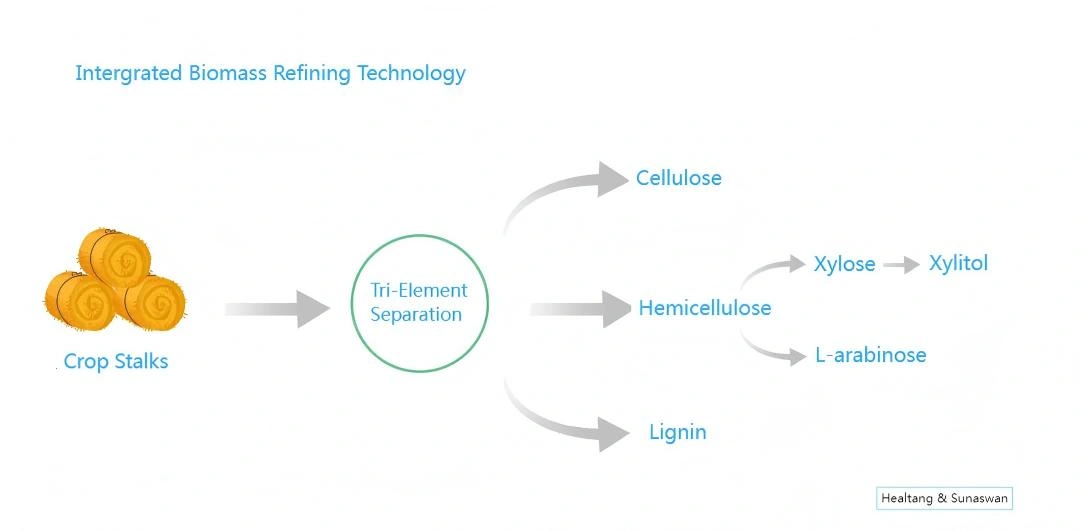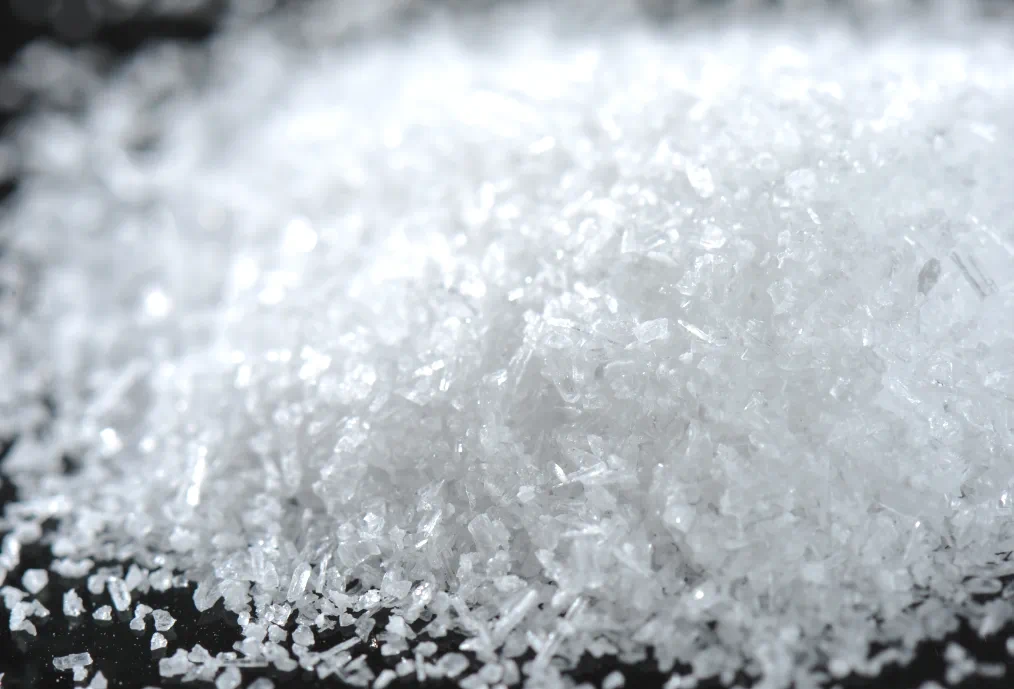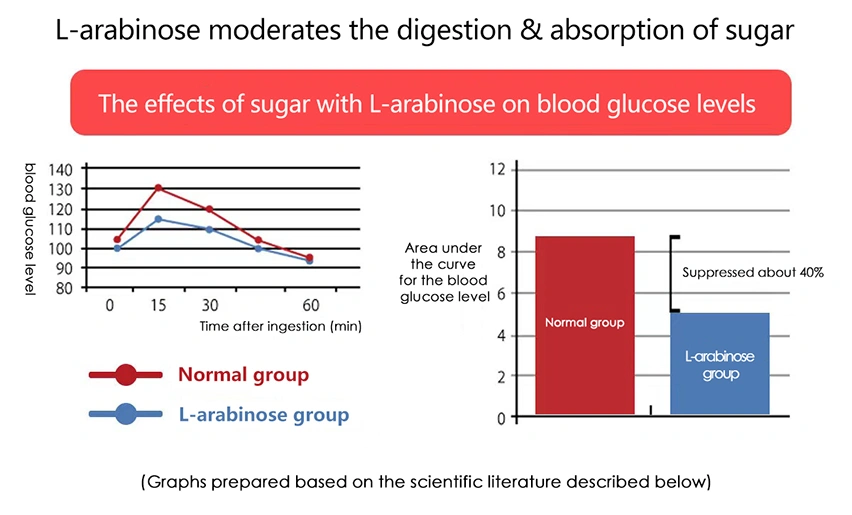Not just a sweetener and additive, in some ways, it is a cure
L-Arabinose is a naturally occurring pentose sugar, which was initially isolated from gum arabic. It exists in the peel and shell of fruits and coarse grains in nature.
In the biomass refining intergrated platform, the hemicellulose is extracted using ternary separation method and used as a raw material for the production of arabinose.
Not just a sweetener and additive, in some ways, it is a cure
L-Arabinose is a naturally occurring pentose sugar, which was initially isolated from gum arabic. It exists in the peel and shell of fruits and coarse grains in nature.
In the biomass refining intergrated platform, the hemicellulose is extracted using ternary separation method and used as a raw material for the production of arabinose.

Arabinose has a white needle-like structure and a purity of more than 99.0%. It has a mild sweetness, and its sweetness is half that of sucrose. Moreover, it has good water solubility. It can reduce sugar intake and lower the glycemic index (GI). L-arabinose is a natural inhibitor of sucrase in the human small intestine. It can selectively inhibit the digestion and absorption of sucrose in the small intestine, reduce the increase in blood sugar and insulin caused by ingested sucrose, and relieve the burden on the body. When 5% L-arabinose is added to sucrose, the GI value drops from 65 (medium GI) to 52 (low GI).

L-arabinose is a new type of functional low-calorie sugar that can inhibit the metabolism and absorption of sucrose in the human body. It can control the rise of blood sugar and the accumulation of fat, and alleviate a series of diseases such as diabetes, obesity, and cardiovascular diseases. Research shows that arabinose has a significant effect on regulating blood sugar levels.
The blood sugar control effects of arabinose:
1. Controlling postprandial blood sugar levels: The results of animal experiments and some human trials show that after entering the human body, arabinose reduces the absorption of sucrose by inhibiting sucrase, thereby preventing the rise of blood sugar, and it plays a certain role in controlling postprandial blood sugar levels.
2. Improving insulin sensitivity: Due to the low glycemic index (GI) of arabinose, it will not cause a rapid rise in blood sugar. Therefore, it helps to maintain stable insulin levels and improve insulin sensitivity.
3. Assisting in lowering blood sugar: Some animal studies indicate that arabinose may have the potential to fight diabetes. Through long-term intake of arabinose, it can significantly improve blood sugar metabolism and reduce the risk of developing diabetes.
Renewable materials + Biomass refining technology

How exactly does arabinose achieve its blood sugar control effect?
The main points are as follows:
1. Inhibiting α-glucosidase: Arabinose can inhibit the activity of α-glucosidase, a key enzyme that breaks down sucrose into glucose and fructose in the small intestine. By inhibiting the activity of this enzyme, arabinose slows down the digestion rate of sucrose, thereby reducing the absorption of glucose. This mechanism of action is similar to that of some anti-hyperglycemic drugs such as acarbose. However, as a natural substance, arabinose has relatively fewer side effects. It does not easily cause gastrointestinal discomfort symptoms like acarbose does.
2. Affecting liver sugar metabolism: Arabinose may also achieve its blood sugar control effect by affecting the sugar metabolism in the liver. In vivo experiments have shown that arabinose can inhibit hepatic gluconeogenesis, that is, reduce the process of converting non-carbohydrate substances (such as amino acids and lactic acid) into glucose. It also promotes the utilization of glucose by liver cells and improves the symptoms of disordered sugar metabolism.
3. Promoting intestinal health: Arabinose is a prebiotic that can promote the growth of beneficial intestinal flora and improve the intestinal microecological environment. This is not only beneficial to overall health, but may also indirectly affect glucose metabolism and insulin sensitivity by improving the intestinal flora.
4. Regulating the gastric emptying rate: Arabinose may also affect blood sugar levels by delaying the gastric emptying rate. A slower gastric emptying rate helps to delay the digestion and absorption process of food, avoiding a rapid rise in postprandial blood sugar.
Although the blood sugar control effect of arabinose has been confirmed in animal experiments and some human trials, more clinical trials are still needed to further verify its effectiveness and safety in different populations. The existing clinical research mainly focuses on the following aspects:
1. Postprandial blood sugar response: A number of studies have evaluated the impact of arabinose on postprandial blood sugar response. The results show that arabinose can significantly reduce the postprandial blood sugar peak and improve overall blood sugar control.
2. Long-term blood sugar control: Some studies have explored the impact of long-term intake of arabinose on blood sugar control and found that arabinose can significantly reduce the level of glycated hemoglobin (HbA1c).
3. Safety and tolerability: Existing studies indicate that arabinose has good safety and tolerability at conventional doses. The reported side effects in a small number of cases are mainly gastrointestinal discomfort, such as abdominal distension and diarrhea. However, these symptoms are usually mild and disappear on their own within a short period of time.
In summary,
Arabinose can be used in diabetic foods, weight-loss foods, health products, health functional foods, sucrose additives, etc. Or it can be used as an additive for pharmaceuticals, over-the-counter drugs, an excipient for finished drugs, a flavoring agent, and an intermediate for pharmaceutical synthesis.
Storage:
This product should be sealed and kept away from light. It should be stored in a cool, dry, and well ventilated place
Package:
25KG/bag, paper plastic composite bags + one layer of food grade PE inner bag.
We can also customize packaging style according to customer requirements.
OEM services provided.

Biomass refinery integrated technology - Convert low-value feedstocks into high-value sustainable chemicals and degradable materials .This new technology innovatively uses new biological solvents to carry out selective physical dissolution and separation operations on biomass raw materials.

Deep within the cell walls of every plant, there is a powerful substance, which provides the second largest source of renewable carbon on Earth. As a renewable material, we believe that lignin will eventually replace fossil materials and completely transform the way we use natural resources to produce products.

In the treasure trove of natural substances, cellulose holds a unique and crucial position. At the microscopic level, cellulose is a large-molecule polysaccharide formed by the linkage of glucose molecules. It has a "aloof" nature, being insoluble in water and not readily interacting with common organic solvents.